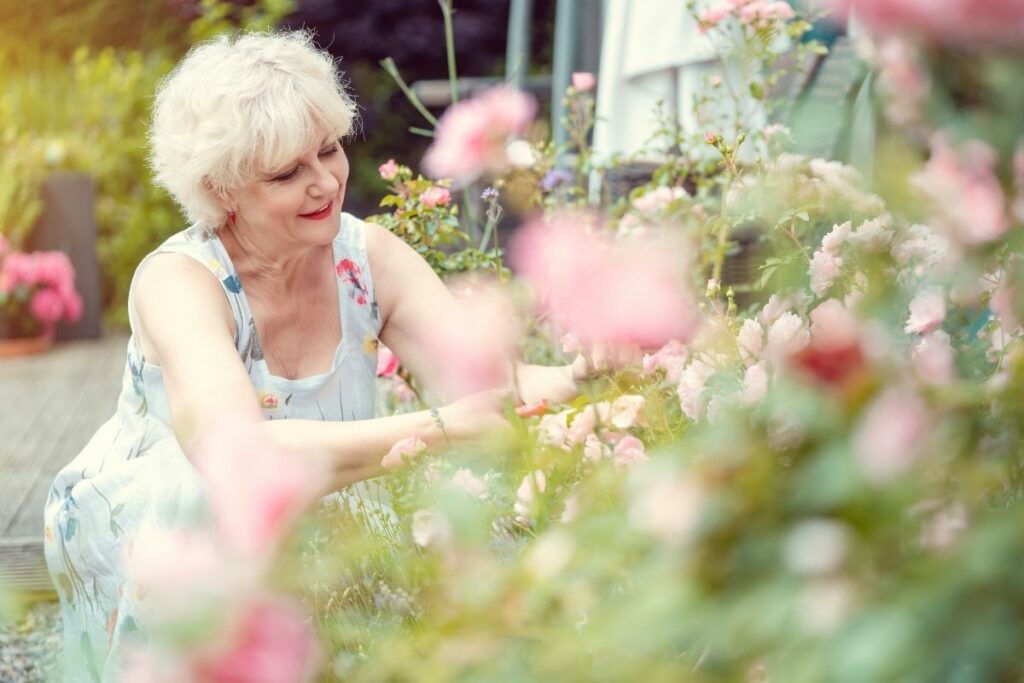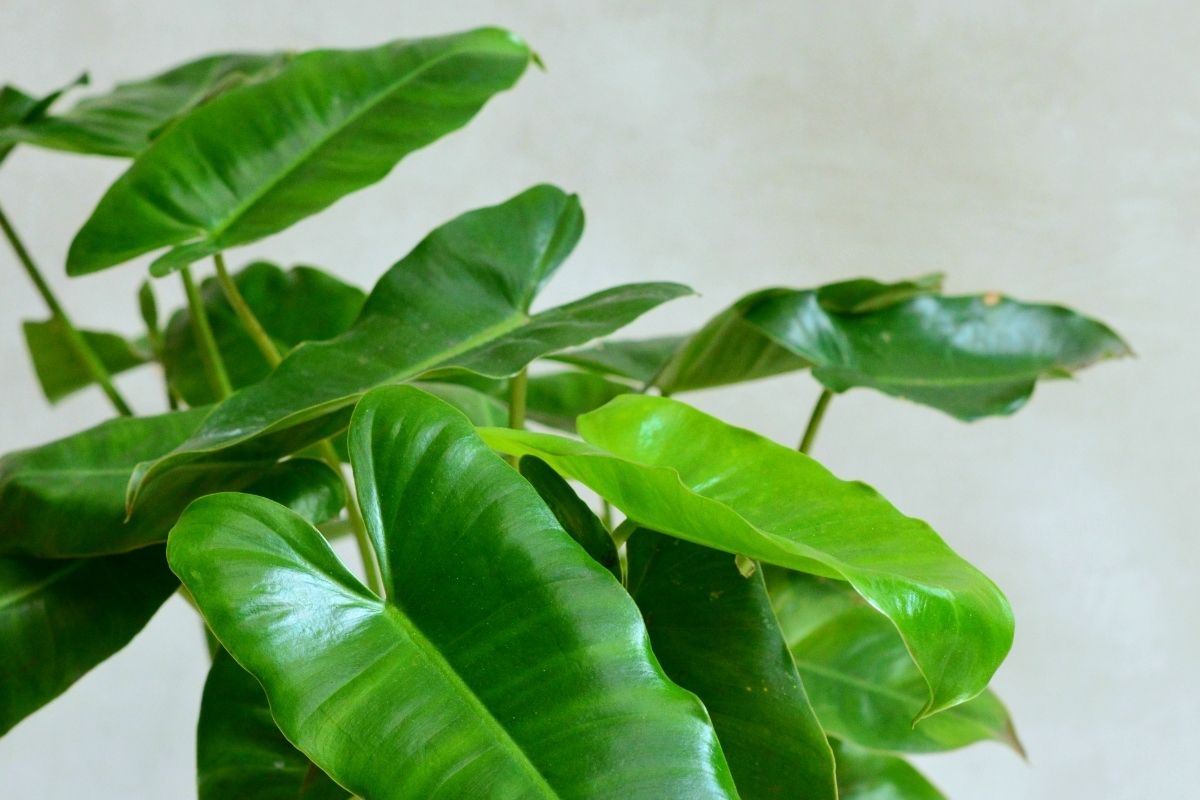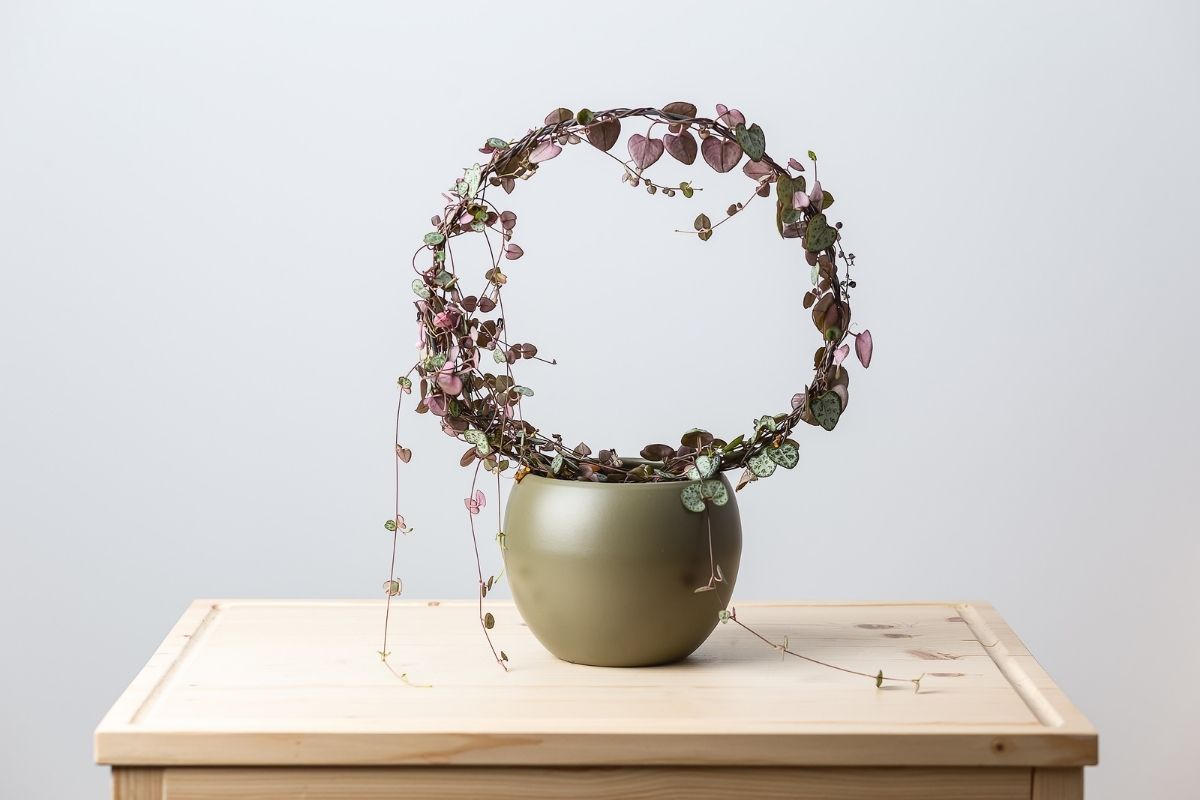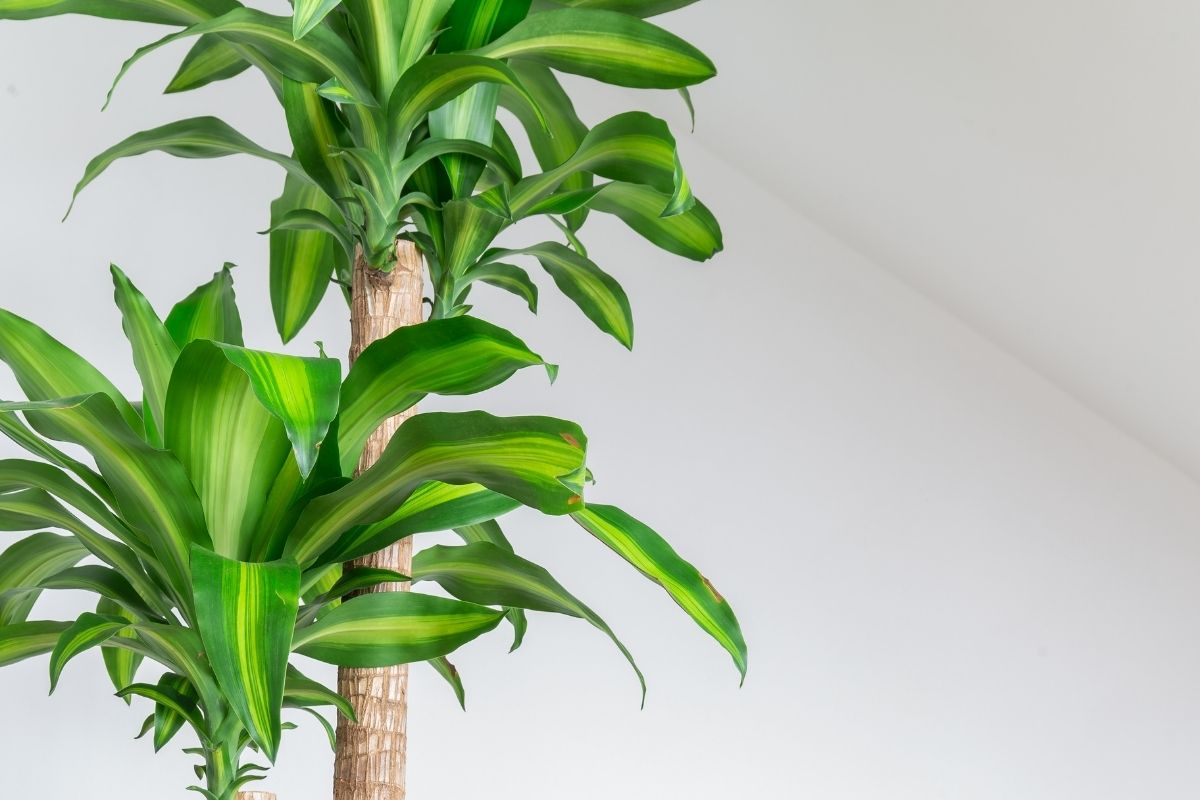Roses are among the prettiest and favorite flowers, with tons of flower lovers yearning to have some in their vase or garden. Well, why not? It signifies beauty and love, which is why it’s a staple in the world of weddings. Its scent and abundance are added perks. And did you know that it has been around for more than thirty million years? Yes, a timeless beauty indeed! Give a bouquet to someone special or combine it along with other flower arrangements for an upcoming special event.
However, don’t get intimidated by its beauty! The good news is that starting a rose garden and taking care of them is a no-brainer. You don’t need to be an expert gardener. Just a basic understanding and little care. But, how should you do it right?
Make sure your roses are getting enough sunlight. Water equably to have constantly moist soil. You additionally have to fertilize them to grow an incredible pool of flowers. Lastly, do some pruning especially during spring to get rid of ailing or old plant materials. And similar to other flowering shrubs, roses are prone to diseases as well. So, always check for black spots or mildew.

Caring for your roses is crucial for their overall well-being and life. But as you see, it shouldn’t be a daunting process. Even less experienced gardeners can explore this endeavor and have those gorgeous blooms all year long. Several questions may now continue to race into your mind, such as how to look for newly planted roses and keep them blooming. In case you have a dying rose, what are the fundamental steps involved? Don’t worry, that’s why we created this guide. As a bonus, we also included the best fertilizer you can use to give plants and bushes the right amount of nutrition for their optimal growth.
How Do You Look After Newly Planted Roses?
Roses are an attractive addition to any home or yard. But here’s the tricky part: looking after your newly planted roses. More attention and care will be required, particularly during the first year. It does need more feeding. Nevertheless, the result is worth those efforts!
Water the roses often
Newly planted roses need far more water than other flowering shrubs. You have to apply water at the plant’s base. A soaker hose could be ideal too. Whichever will work. Do not overhead as you may trigger diseases to outspread or unintentionally harm the flowers. Perform thorough watering with one to two inches of water. This will help the roses to grow a massive, entrenched root system that will aid them in enduring even the most drought-like situations. You should water them 2-3 times per week all through the primary growing season.
Feed with a fertilizer
One important thing to know about roses is that they are greedy feeders. So, you will need to do regular feeding to promote healthy plants. The fertilizer you intend to use should be specifically labeled to use for roses. Sprinkle squarely beneath the canopy and around the plant’s base. Reapply as soon as the flowers begin to bloom.
Also, the fertilizer should have the proper balance of nutrients – phosphorus, potassium, and nitrogen – along with some trace elements including iron, boron, and copper. They encourage the healthy growth of the root and plant cell.
These nutrients can be found both in organic and inorganic or synthetic materials. Newly planted roses are required to feed with a liquid fertilizer, either organic or synthetic. Feed them regularly and soon you will be rewarded with a luscious garden that’s packed with sweet-smelling and dazzling flowers.
Spread a good layer of mulch
Mulch is another essential element you should be looking for when taking care of newly planted roses. It keeps weeds to the tiniest, ensures the most of the soil is in a hot stretch, and squashes any form of disease such as rust.
The ground must be free from old and diseased leaves before applying the mulch. You should also ensure your roses are thoroughly watered and fed. Then, spread a layer of it around the flower while maintaining a two to three inches depth.
Cut off the flower stems
Do not cut off the flowers during the first summer and spring once you planted the rose. Although, you can cut it back shortly after planting. The proper cutting of stems is eight inches over the grafted area. And using pruning clippers or shears, perform straight, clean cuts.
Pruning
Pruning is vital for flowering. However, how often or how much you prune largely depends on the type of rose you own. For instance, bush and shrub roses require pruning during spring. It will aid in removing all those dead woods. The same goes for climbing roses. You need to do some pruning in the spring as well to half the flower’s height and get rid of the deadwood. This assists in new growth.
If you have English shrub roses, it is advised not to prune them extremely hard especially for an initial couple of years. Allow the stems to toughen and developed – enough to support the flowers.
How Do You Maintain a Rose Plant?
Maintaining a rose plant is similar to taking care of a newly planted rose. The process involves watering, fertilizing, mulching, and pruning. Here, you will learn some tips on how to maintain indoor roses as well as roses in a container.
Tips for maintaining indoor rose plant
- While indoor, make sure your lovely roses are receiving enough amount of sunshine. Don’t hide them in the corner throughout! Otherwise, they will not bloom and slowly die. It should be getting numerous hours of sunlight every single day.
- Flowering roses tend to get thirsty all the time. They quickly dry out when placed in the container. To check for dryness, simply stick a finger inside the soil.
- Plucking those dying flowers with your bare hands may be tempting, but is not a good idea. You are only damaging and tearing the stem. Trim at forty-five degrees angle using pruners.
- Year-old roses grow over the pot. If this is your case, gently pull the roots apart using your fingers, and then eradicate the original soil as much as possible. Replant in a plant that can hold and support the flowers. Also, ensure the pot has drainage holes.
- Give your miniature indoor rose a rest period during the winter season. That’s because they become latent and throw down their leaves. Doing this tip will extend both the health and life of your valuable plants.
- Fertilize indoor roses as you would with outdoor roses. Though, you only need to fertilize them during their growing season, whether summer or spring. Also, feeding them is done less often.
- Rose doesn’t want to feel overcrowded. Plant it on its own bed or container to ensure it will develop healthily.
- Maintain a rose bed in a pest- and weed-free setting. It easily attracts pests and insects, so keep them at bay.
- If necessary, spray your plants with an anti-fungal mixture. It will keep them looking lovely and spotless. This spray is mostly ideal during cold weather. It does a good job of removing black spots on the leaves as well as powdery mold and other similar issues.
Tips for maintaining roses in containers
- Place the container roses in a location where it can get a minimum of six hours of sunlight. For hot areas, put your rose in a clay pot as it keeps the roots perfectly cool.
- Any container will go along with roses and let them develop beautifully. Just be sure the root space is suitable plus the roots are taking appropriate care. The container should have a depth of at least 2-2.5 ft. and a diameter of 15-20 inches. The deeper the container, the better for plants to mature and flourish. And since container roses do not share the same root space with several other plants, they usually grow successfully. You can integrate striking groupings of flowers, but be careful when planning to crowd them. Low-growing monocots and alyssum are some of the best chums of roses. They can draw a distinction or butter up with the flower’s bloom shades.
- Some rose varieties are not ideal to grow in a container including shrubs and climber roses. But don’t fret yet! You can grow them in a big planter or container with a depth of 2.5-4 feet.
- Compared to in-ground matching parts, container roses may need further applications of fertilizers and nitrogen.
How Do You Care for a Dying Rose?
Planting roses is not all about glory. Expect to deal with certain issues, like a dying rose. Now, what should you do in case your prized flowers start to show signs of diseases?
But first, you should acquaint yourself with common reasons why roses are dying.
You may be lacking fertilizer
As have mentioned, roses are always hungry. They love to eat frequently. This is specifically true if you have planted them alongside other weeds or plants since they tend to wrestle for food.
…or applying too much fertilizer
Putting the excess amount of fertilizer can cause a serious issue as well. It will result in scorched, shrunken, and brown-colored leaves.
Your roses are not getting an adequate supply of water
It’s best to water your rose bush every day, both at night and in the morning. Doing so will allow the water to absorb.
- Roses may be suffering from a disease or fungus
Noticed chalky mildew, black spot, or other relevant symptoms? Your flowers could be having a disease or fungus. To prevent them, you need to water the roots, cut dead the inflicted areas, and buy a fungicide.
There is no proper amount of protection and sun
Your roses might be planted in an out-of-place location, which is a common mistake that most newbies fall into the trap. Besides getting six up to eight hours of sun, they should also be protected from harsh weather. In this case, you may need to plant them close to a tree or property where an afternoon or morning sun is likely to come up. All while ensuring they are still shielded against the damaging effects of the sun.
There are hosts of pests
Due to their sweet smell and beautiful bloom, roses are susceptible to several forms of pests, which include spider mites, slugs, and the popular aphids. These little yet annoying critters love crawling on your bushes and make their home. That’s why investing in a good quality pesticide is highly recommended.
The deer could be the main culprit
Deer fancies roses as much as humans do. But instead of admiring their exquisiteness from afar, they love to eat them up – from topmost to the bottom side! So, in case there are groups of deer in your area or you own one, fence the surroundings of your garden to keep those blooms entirely safe and intact all year long.
You could be over-spraying from herbicide
This is called abiotic damage. You will know it is your flower’s enemy if they suddenly turned yellow or wilt. This will be convoyed by shoot creasing and malformed blossoms. Glyphosate herbicide is what usually causes it. A small dosage can deteriorate the crown of your plant while a large amount can kill flowers soon after getting contact.
Now, how do you save a dying rose?
- Prune all lifeless and old branches. You should only use sharp pruning shears. Perform a major pruning throughout mid-summer, fall, and spring.
- Clear off any dead debris including the moldings and deceased grass and leaves. Use a garden rake to do so.
- Sprinkle fertilizer with the recommended amount indicated on the label. Feed it once per week but as soon as it returns to its tiptop shape, fertilize it only once a month.
- Of course, watering your flowers is essential too. Keep watering until the ground becomes drenched enough. Those living in a hot weather condition should water for fifteen minutes every day – particularly if the temperature reaches above ninety degrees. Whereas if you’re in a colder climate, water the rose every other day.
- Be sure to check for any signs of pest infestations. Common signs include tiny hollows in the leaves. Pick off any pests. Use a damp cloth for wiping the leaves. Don’t stress yourself out when pests continue to pester your thriving flowers. Just spray with lathered water or use an insecticide spray.
What Is the Best Fertilizer for Roses?
Fertilizer is composed of two types: organic and inorganic. Both can guarantee to provide your roses with rich sources of nutrients in the maturation season – allowing them to bloom better as well as resist disease and pest problems.
Organic Fertilizer for Roses
This can be derived from animal or plant substances. Extremely ideal if you want to maintain loyalty to our mother nature since it’s 100% eco-friendly.
- Alfalfa meal is considered a balanced natural fertilizer. That is if you can endure the smell since it is renowned for having a pungent odor. Just mix it in the water and soil.
- Banana peel contains potassium along with other essential trace elements. You basically have to bury it down in the soil.
- Epsom salt is used to feed all rose bushes excluding small roses. Only recommended to use every other year.
- Bone meal is a great source of phosphorus. Simply mix it into the soil. Add one piling tablespoon for each rose plant. It doesn’t only feed the soil but prevents wildlife from damaging your plants as well.
- Dried blood meal adds nitrogen. Add one tablespoon around the plants.
- Eggshells have high calcium content, which makes it an excellent organic fertilizer for roses. It will toughen plant cells while hindering pathogens to damage the plant body.
Other organic fertilizers you can try are apple cider vinegar, fish aquarium water, leaves, used tea bags, white vinegar, baking soda, fishbones, and powdered milk.
Inorganic Fertilizer for Roses
Whether manmade, synthetic, or chemical. This is convenient, ready to use, low priced, and more concentrated. But unlike organic alternatives, it cannot guarantee to improve the soil plus there’s no clear enduring effect.
When choosing inorganic fertilizer, keep this Nitrogen-Phosphorus-Potassium ratio in mind: 18-24-16. The amount of fertilizer you will need to apply is already specified by the manufacturer. Be sure to follow it closely. The general rule of thumb, however, indicates that a complete fertilizer should contain half a cup for each rose.
Do not stack the fertilizer on dry soil as it typically causes burn. Remember that inorganic products are more concentrated. So instead, apply uniformly and finely around the plants. Rake it nimbly in wet or moist soil.
Conclusion: How Do You Keep Roses Blooming?
Knowing these methods and tips to keep your roses blooming may overwhelm you. But tell you what, it’s only in the beginning. Once you get acquainted with the ins and outs of taking care of roses plants and bushes, you will always have successful, highly satisfying gardening efforts worth sharing with anyone. It can be a good source of money too!
Related posts
-
How to propagate philodendron

Propagating Philodendron: Methods that every Plant Lover Should Know Plants add character and aesthetic value to any space. They make it more livable as they tend to be unique decorations regardless of where you place them. In addition, Plants grow to appeal to our senses and calm our minds. They are beautiful to look at…
-
How To Propagate String Of Hearts

The beautiful String of Hearts plant, native to South Africa and Zimbabwe, has captured the attention of America and dug its roots straight into our hearts. It loves humidity but can still thrive in drier climates. Many collectors have at least one String of Hearts plant. Its dark green heart-shaped leaves and silver or pink…
-
Mass cane plant care

Mass cane plants, grown as decorative plants are renowned for a wide range of advantages. Mass cane plant species, known as corn plant can be widely seen in European and American countries. Even though originated as an African plant, you can see the mass cane plant in countries with low-temperature. How to cultivate mass cane…
